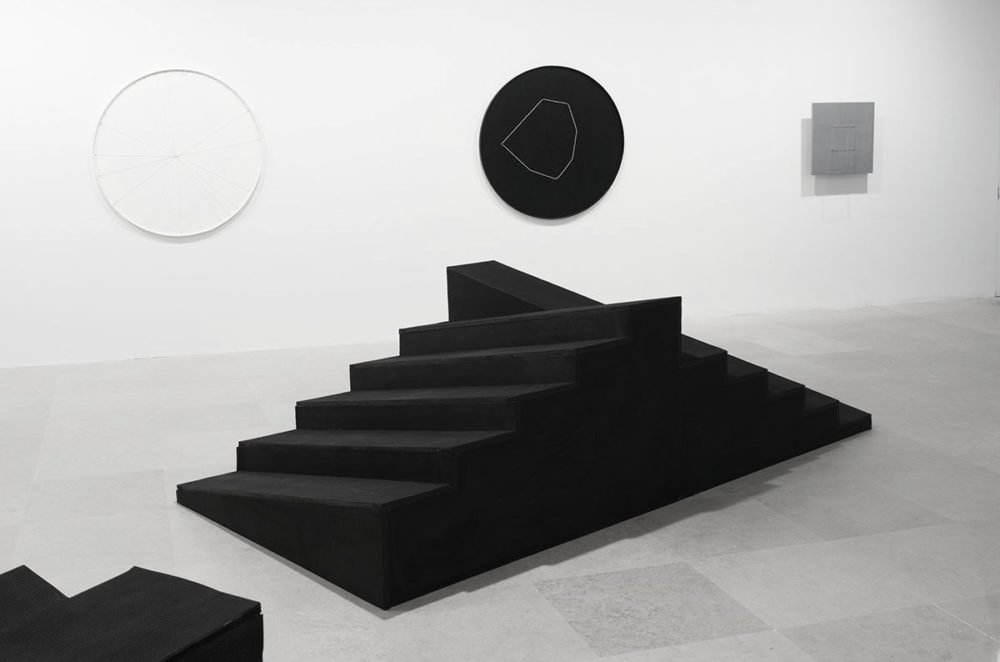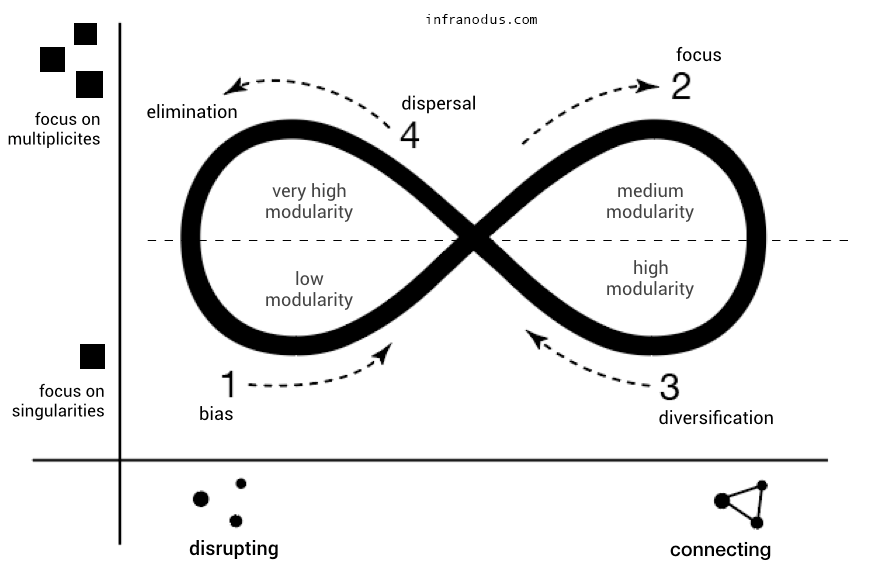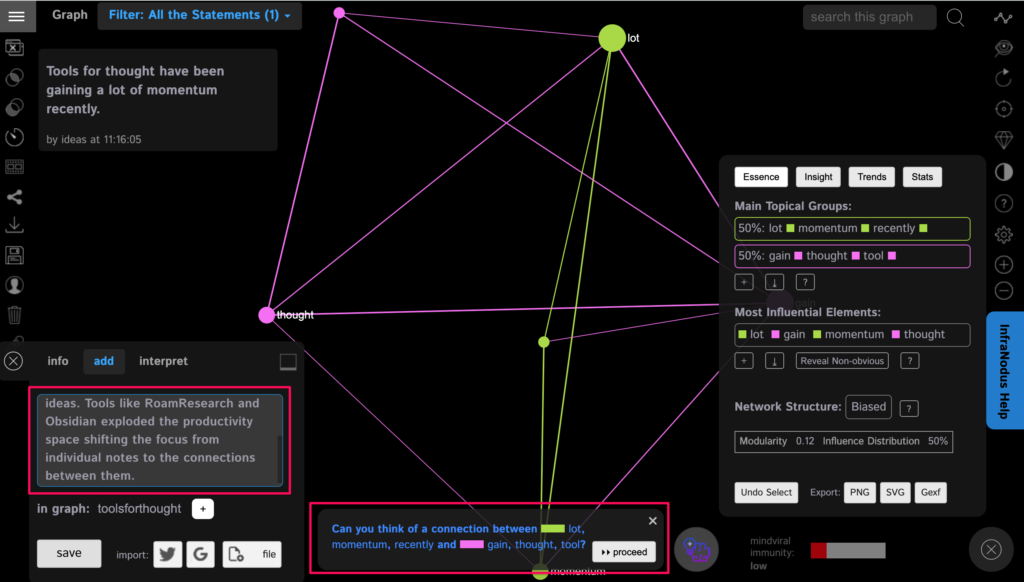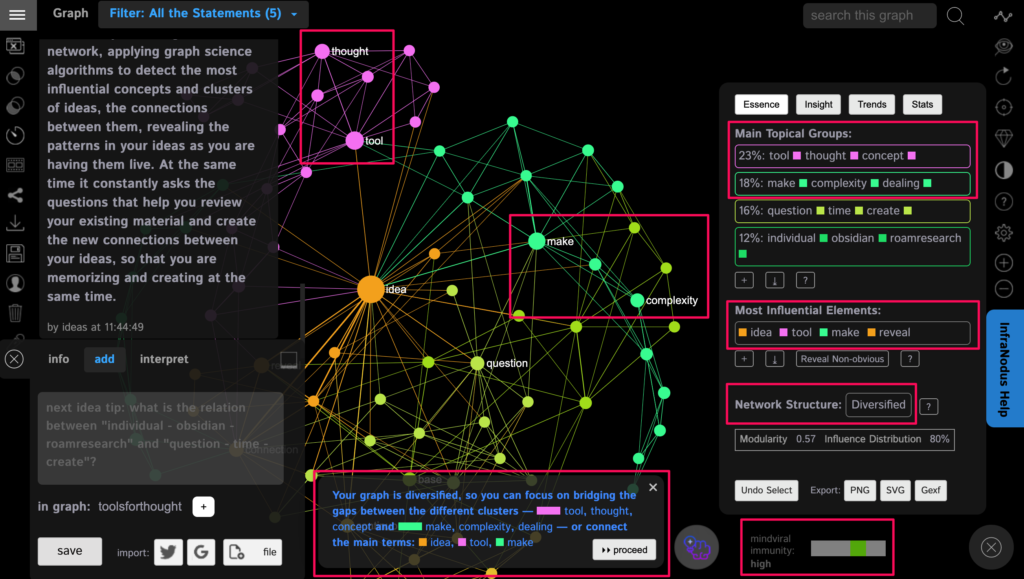Posted by Nodus Labs | November 30, 2020
The Visual Interviewing Technique

The most interesting interviews have the right mix of spontaneous and prepared. They have a structure to their narrative and can also respond to the constantly changing landscape of the conversation.
A good interviewer wants to open their subject up and provide a good overview of their worldview. At the same time, we want the interviewee to zoom in and go into detail about the most interesting ideas, to make connections between them in a way that we haven’t heard of before.
Based on our variability modulation technique, we propose the following schema for a conversation. It is now implemented into our InfraNodus text network visualization tool, so you can try it out on a real conversation, a Zoom talk, or a brainstorming session.

Stage 1: Exploration
Disruption to Connection
From Singularity to Multiplicity
The interviewer starts with a question to open up the conversation. After the interviewee answers the question, they will produce the first network structure graph and the next step is to propose them to think of a connection between the topics they mentioned:

This process will encourage the interviewee to present a diverse set of ideas and to make connections between them At some point, they will reach a moment where several diverse subjects are covered and it is now time to focus on one and to go in-depth on one of them.
Stage 2: Focus
Focusing on Connecting
From Multiplicity to Singularity
This is where the interviewer can ask a question about a certain topic and the interviewee to zoom in deeper into the specifics of it. InfraNodus has a built-in algorithm that will detect these dynamics (medium modularity) and propose to focus on a certain idea and to develop it further with a relevant question.
Stage 3: Diversification
From Connecting to Disrupting
From Singularity to Multiplicity
Now that a certain topic is explored and, in some ways, exhausted, it is time to switch the subject. If you’re using InfraNodus it will detect that the structure of the discourse is too focused or too disrupted and will propose you to ask a question that will explore the less represented ideas and the periphery, based on the structural properties of the discourse or to make connections between them. Asking a question that asks the interviewee to talk about something completely different, either what they have mentioned before in the passing or what they haven’t mentioned at all, will achieve the same objective.

Stage 4: Elimination
From Multiplicity to Singularity
Staying Dispersed
At this stage, we have reached the point where we talked about multiple different things and it is time to zoom in again and focus on a specific subject. We choose one of them and zoom into the topic to explore it again. The new iteration begins.
Here is an excerpt of this approach from one of the interviews we conducted using this methodology:
and here’s the full version of the interview:
Try this tool for an interview on https://infranodus.com
The cover image is by Gianni Colombo

